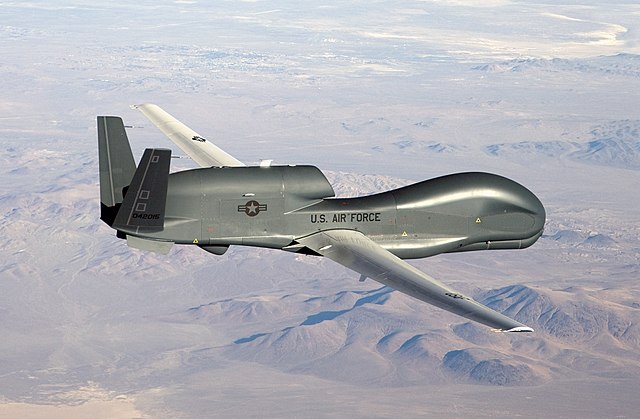“If we’re not willing to use it here against our fellow citizens …”
by Tom Sullivan
“If we’re not willing to use it here against our fellow citizens, then we should not be willing to use it in a wartime situation.”
– Acting Under Secretary of Defense Michael W. Wynne speaking in 2006 about using nonlethal weapons such as microwave emitters. Wynne signed the 2004 DoD Airspace Integration Plan for Unmanned Aviation.
Ponder that a moment.
Meanwhile, those little drones are getting just a bit pesky. On July 17:
Fire officials said aircraft sent to battle a wildfire that swept across a Southern California freeway were briefly delayed after five drones were spotted above the blaze.
U.S. Forest Service spokesperson Lee Beyer said it was the fourth time in a span of a month that a drone disrupted efforts to suppress a wildfire in the region. He said some firefighting planes that were in the air were grounded, while several other aircraft that were on the way to the blaze had to be diverted until the drones left the area.
On July 21:
A Lufthansa plane with 108 passengers on board nearly collided with a drone as it approached Warsaw’s main airport on Monday afternoon, the airline said on Tuesday.
But those little Chinese-made drones do not worry me so much. I’m worried about “the big Corellian ships now,” the kind the military plans to fly from 144 U.S. locations — the Reapers, and Global Hawks with wingspans greater than a 757’s. (Go back and re-read the quote at the top.)
At Al Jazeera, Joshua Kopstein is worried about drones used by the police and the FBI:
As I’ve written before, letting police fill the streets and skies with networked cameras is a fast-approaching nightmare scenario for privacy and civil liberties. The combination of persistent aerial surveillance tech with already widespread facial recognition — for example, in the form of drones or manned aircraft making secret surveillance flights for the FBI — robs us of a fundamental right to control what information we reveal through our mere physical presence. When anyone with access to a database can instantly identify and track anyone walking down the street, it destroys the protective barrier between one’s private and public self.
Technology has a multiplier effect, and it’s naive to think police won’t use these tools to optimize predatory practices such as stop and frisk, civil asset forfeiture and discriminatory violence and surveillance. In India, police have adapted drones to shoot pepper spray at protesters. In the U.S., aerial surveillance systems already exist that enable authorities to monitor entire cities and zoom in on objects as small as 6 inches. These ubiquitous, soon-to-be-automated systems and sensors combine to create what Rob Kitchin, a geographer and spatial analysis expert at Maynooth University, calls the “smart city,” which he describes as “an all-seeing, all-tracking, all-reacting system that stifles dissent before it has chance to organize.”
Right out of “Minority Report.” There’s no chance the NSA would avail itself of all that surveillance tech to violate Americans’ privacy, right?
For a panel looking at drafting drone rules in Illinois, Kopstein writes, “not a single privacy or civil liberties group has been invited.” Furthermore:
Another panel on facial recognition, which will inevitably be used by police drones, ran into similar problems in Washington, D.C., last month. Nine major privacy and consumer advocacy groups walked out of the talks, convened by the Commerce Department, because tech lobbyists refused to agree to the basic premise that people should be able to walk down the street without being identified and tracked by unknown parties.
But being tracked anywhere is a small price to pay for having Amazon drop a cold six-pack on your doorstep during halftime. Plus, if you have done nothing wrong….
